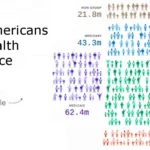If you are new to the world of wine, you might feel overwhelmed by the vast selection of bottles, the different types of grapes, and the numerous regions where wine is produced. However, with a bit of guidance and practice, you can become a wine connoisseur and savor the different flavors and aromas that each bottle has to offer.
In this beginner’s guide to wine tasting and appreciation, you will explore the basics of wine, the art of wine tasting, the different types of wines, wine-tasting etiquette, tips for pairing wine with food, understanding wine labels, and wine-tasting events and tours. So, raise a glass and dive into the wonderful world of wine!
Introduction to Wine Tasting
Wine tasting is the art of evaluating and appreciating wine. It involves using your senses to assess the color, aroma, taste, and mouthfeel of the wine. Wine tasting is not just about drinking wine, but it is about the experience of tasting and analyzing wine. The basic steps of wine tasting are the following:
- Look at the color and clarity of the wine.
- Smell the aroma of the wine.
- Taste the wine.
- Observe the aftertaste or finish of the wine.
Wine tasting can be done alone or with a group of friends. It can be a fun and educational experience that can enhance your appreciation of wine.
Understanding the Basics of Wine
Before diving into the art of wine tasting, it is essential to understand the basics of wine. Wine is an alcoholic beverage made from fermented grapes. The grape variety, the region where the grapes are grown, and the winemaking process all play a role in the taste and quality of the wine.
The main types of wine are the ones listed below:
- Red wine: Made from red or black grapes
- White wine: Made from green grapes
- Rosé wine: Made from red grapes but has a pink hue
- Sparkling wine: Wine that has carbon dioxide bubbles
- Dessert wine: Sweet wine that is often served with dessert
Understanding Wine Labels
Understanding wine labels can be confusing, especially if you are new to wine. Here are some tips to help you understand wine labels:
- Look for the grape variety. This will give you an idea of the flavor and aroma of the wine.
- Look for the region. The region where the grapes are grown can affect the taste and quality of the wine.
- Look for the vintage. The vintage is the year the grapes were harvested, and it can affect the taste of the wine.
Tips for Pairing Wine with Food
Pairing wine with food can enhance the flavor of both the wine and the food. Here are some tips for pairing wine with food:
- Pair red wine with red meat and hearty dishes.
- Pair white wine with seafood and creamy dishes.
- Pair sweet wine with dessert.
- Pair sparkling wine with appetizers and light dishes.
The Art of Wine Tasting
Wine tasting is an art that requires practice and attention to detail. The following are some tips to help you become a wine-tasting pro:
- Look at the color and clarity of the wine. Tilt the glass at a 45-degree angle and observe the color of the wine. Red wines can range from light ruby to deep purple, while white wines can range from pale yellow to golden. The clarity of the wine can also give you an indication of its quality.
- Smell the aroma of the wine. Swirl the wine in the glass to release the aroma. Take a sniff and try to identify the different aromas. You can smell fruits, spices, flowers, or even earthy notes in the wine.
- Taste the wine. Take a sip of the wine and let it linger in your mouth. Swirl it around and try to identify the different tastes. You can taste fruits, spices, oak, or even tannins in the wine.
- Observe the aftertaste or finish of the wine. The aftertaste is the taste that lingers in your mouth after you swallow the wine. A long and pleasant aftertaste is a sign of good-quality wine.
Wine-Tasting Etiquette
Wine-tasting etiquette is essential when attending wine-tasting events or tours. Here are some tips to help you navigate wine-tasting etiquette:
- Dress appropriately. Wine-tasting events are usually formal or semi-formal, so dress accordingly.
- Hold the glass by the stem. This will prevent your hand from warming the wine and affecting its taste.
- Practice good hygiene. Avoid wearing strong perfumes or colognes that can affect your sense of smell.
- Don’t overpour. Only pour a small amount of wine into your glass to avoid wasting wine and getting drunk.
Wine-Tasting Events and Tours
Attending wine-tasting events and tours can be an exciting and educational experience. Here are some tips to help you make the most of your wine-tasting event or tour:
- Do your research. Find out which wineries or vineyards you want to visit and make reservations in advance. And aim to try wines from outside the country. For example, you should go to Mexico, which has a flourishing wine industry. There, you can savor a glass of nice Mexican wine.
- Pace yourself. Don’t drink too much wine, or you will not be able to enjoy the experience fully.
- Take notes. Write down your impressions of the wine and the winery or vineyard.
Conclusion: Enjoying and Appreciating Wine
In conclusion, wine tasting and appreciation is an art that can be enjoyed by anyone. With practice and patience, you can become a wine connoisseur and savor the different flavors and aromas of each bottle. Remember to drink responsibly and enjoy the experience of tasting and analyzing wine.


